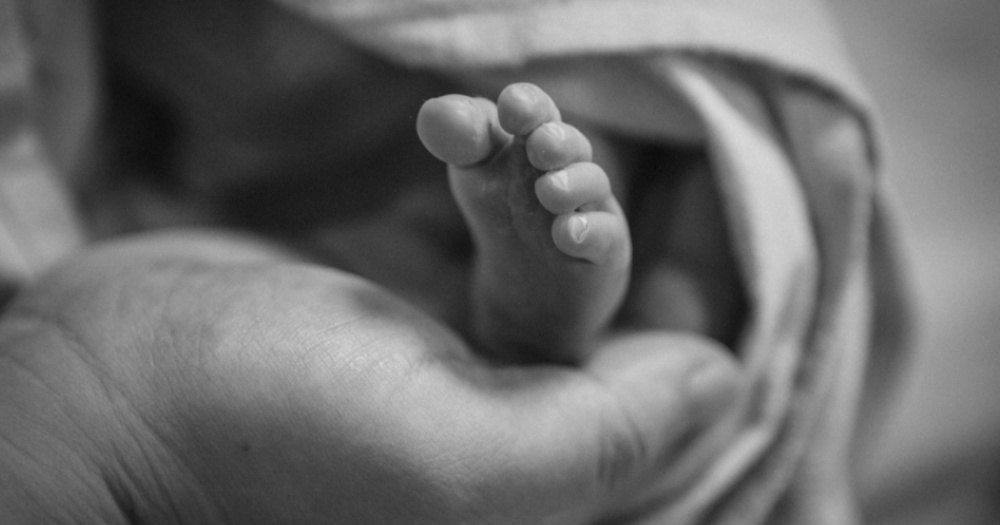COMMENTARY: "Society has conditioned us to celebrate a life lived when an adult passes on, but we hush a baby's death, like it's something to hide." Joan Leong, a volunteer photographer who photographs babies who die at birth, believes that photographs serve as a timeless reminder of the child.
Mothership and The Birthday Collective are in collaboration to share a selection of essays from the 2020 edition of The Birthday Book.
The Birthday Book (which you can buy here) is a collection of essays about Singapore by 55 authors from various walks of life. These essays reflect on the narratives of their lives, that define them as well as Singapore's collective future.
"Seeing Life and Photographing Death" is an essay contributed by Leong, a media professional who is a volunteer photographer with Now I Lay Me Down To Sleep.
By Joan Leong
Sometimes I get an unknown number calling my phone.
The voice at the end of the line is stoic.
“Hi, I’m very sorry to disturb you. But my baby has just died, and I was wondering if it would be alright that you come and help photograph him.”
We often have few photos to remember babies who die at birth
I have been a volunteer photographer with the organisation, Now I Lay Me Down To Sleep, for more than a decade.
We are a group of professional photographers, located worldwide, who help parents photograph their babies who die at birth.
Many would deem the work that we do macabre, but I knew I wanted to volunteer for the organisation the minute I found out about it.
The organisation was formed in 2005 as a non-profit organisation, and inspired by one of the co-founders, Cheryl Haggard, having professional photographs taken of her baby son when he passed on.
The organisation exists to give bereaved families the gift of professional heirloom portraits of their babies to remember them by.
As a photographer, I subscribe to the practice of capturing the moment, saving memories to savour again.
When adults pass on, we often have a lifetime of photos of and with them; but with babies, we may only have those few hours of pictures, if at all.
A baby's death shouldn't be something that is hidden
I, too, had a sister who passed on a few days after birth.
This was in the eighties. Photography was not the trend du jour, as it is now with our easy access to iPhone or Samsung phone cameras.
We did have a photograph taken with the baby, quite possibly by someone from the hospital, using a disposable film camera.
The photo was a quick snap of our grim faces, with my dad carrying baby Jasmine.
We hardly looked at the picture, nor have we talked about the baby since.
Society has conditioned us to celebrate a life lived when an adult passes on. But we hush a baby’s death like it is something to hide—for some, the experience still carries with it the themes of stigma, shame, and guilt.
Yet a life—any life—deserves to be celebrated and treasured.
Around the world, more parents are choosing to have professional photos taken of their stillborn or dying babies, facilitating the grieving process by allowing themselves the time and space to honour their babies.
In those painful moments of death, we celebrate life.
Through my years of working with bereaved parents, I realised I was providing different forms of grief support. We are helping the babies be seen, however brief their existence may have been.
Photos serve as a timeless reminder of the child
By providing these heirloom photographs for the parents, we are helping them preserve their child’s memory.
The black and white images serve as a timeless, tangible reminder that their child was here, and is remembered, loved and missed every day.
Parents appreciate that I am there as a photographer—without emotional baggage, simply listening and guiding them through this confusing time.
One common thread from parents is that they do not have the capacity to look after the emotions of their family and friends.
While most of us think we are supporting grieving parents by sharing our feelings (thereby showing that we are as sad as they are for their loss), our good intentions may actually add more stress on the parents as they feel they have to tend to our feelings instead of processing their own.
A single image can be a powerful one
If the parents allow me to, I try to stay in touch with them. I want to celebrate with them the other milestones that they experience after one of their most difficult times.
Some share their joy in conceiving again, which will either find me traipsing down to the hospital to photograph the newborn or organising a family photoshoot at a later date.
The photograph has always been viewed as a tool that captures a moment in time. Memories, keepsakes, pictures of our travels, birthdays, graduations, special events.
In this day and age, billions of people around the world are producing photographs every second—sometimes, not realising the importance of memories they are capturing.
In this work I do, I have come to recognise how important and powerful a single image can be, in giving the gift of eternal memories of a loved one whose time was heartbreakingly short-lived.
If you happen to be in the education space and think this essay may be suitable as a resource (e.g. for English Language, General Paper or Social Studies lessons), The Birthday Collective has an initiative, “The Birthday Workbook”, that includes discussion questions and learning activities based on The Birthday Book essays. You can view the Workbook issue for this essay here, and sign up for The Birthday Workbook newsletter at bit.ly/TBBeduresource
We deliver more stories to you on LinkedIn
Top image via Joan Leong.
If you like what you read, follow us on Facebook, Instagram, Twitter and Telegram to get the latest updates.
